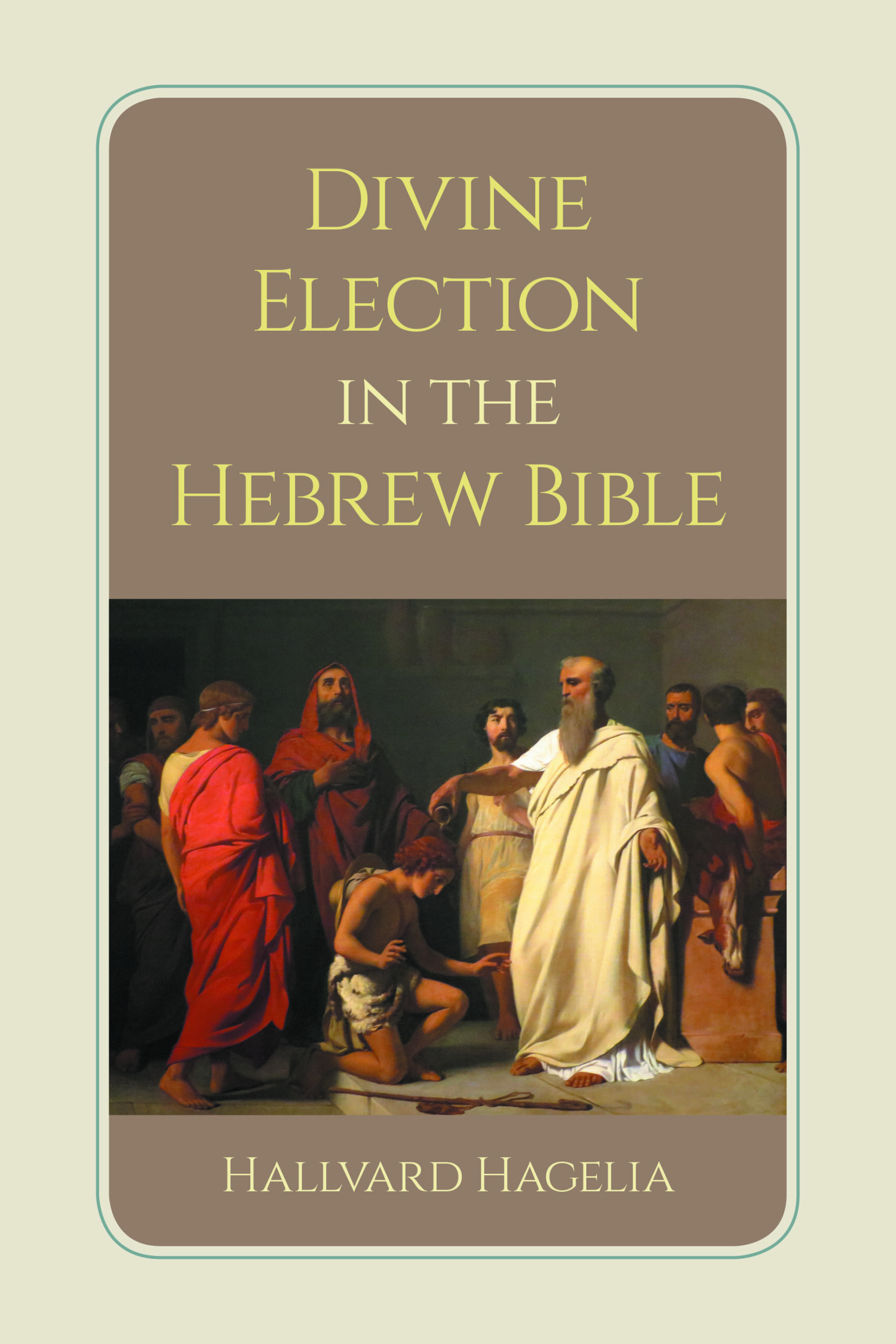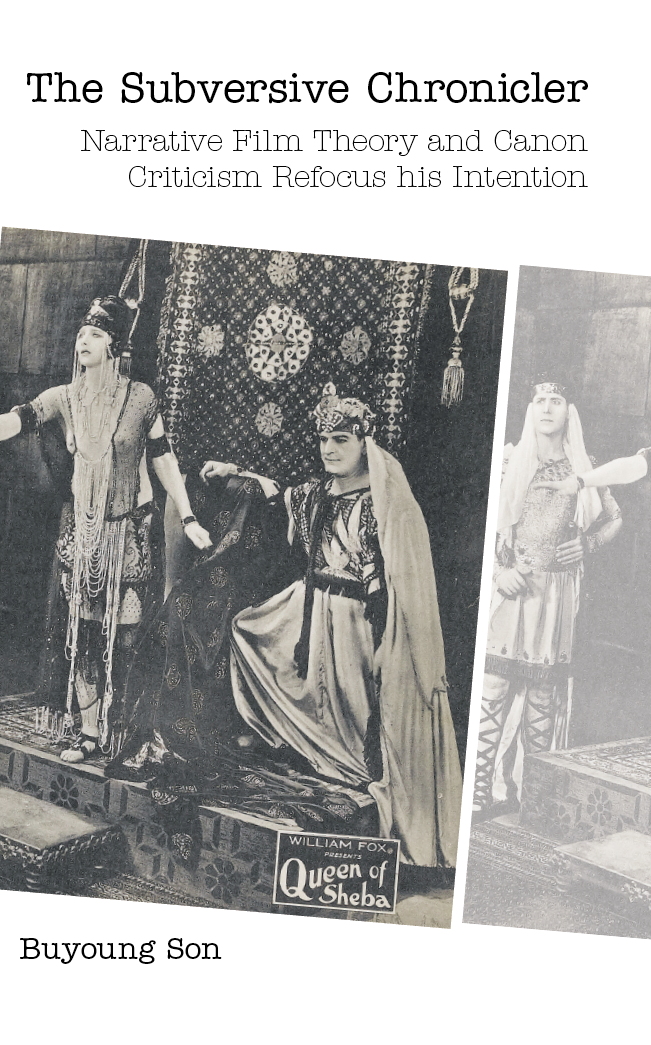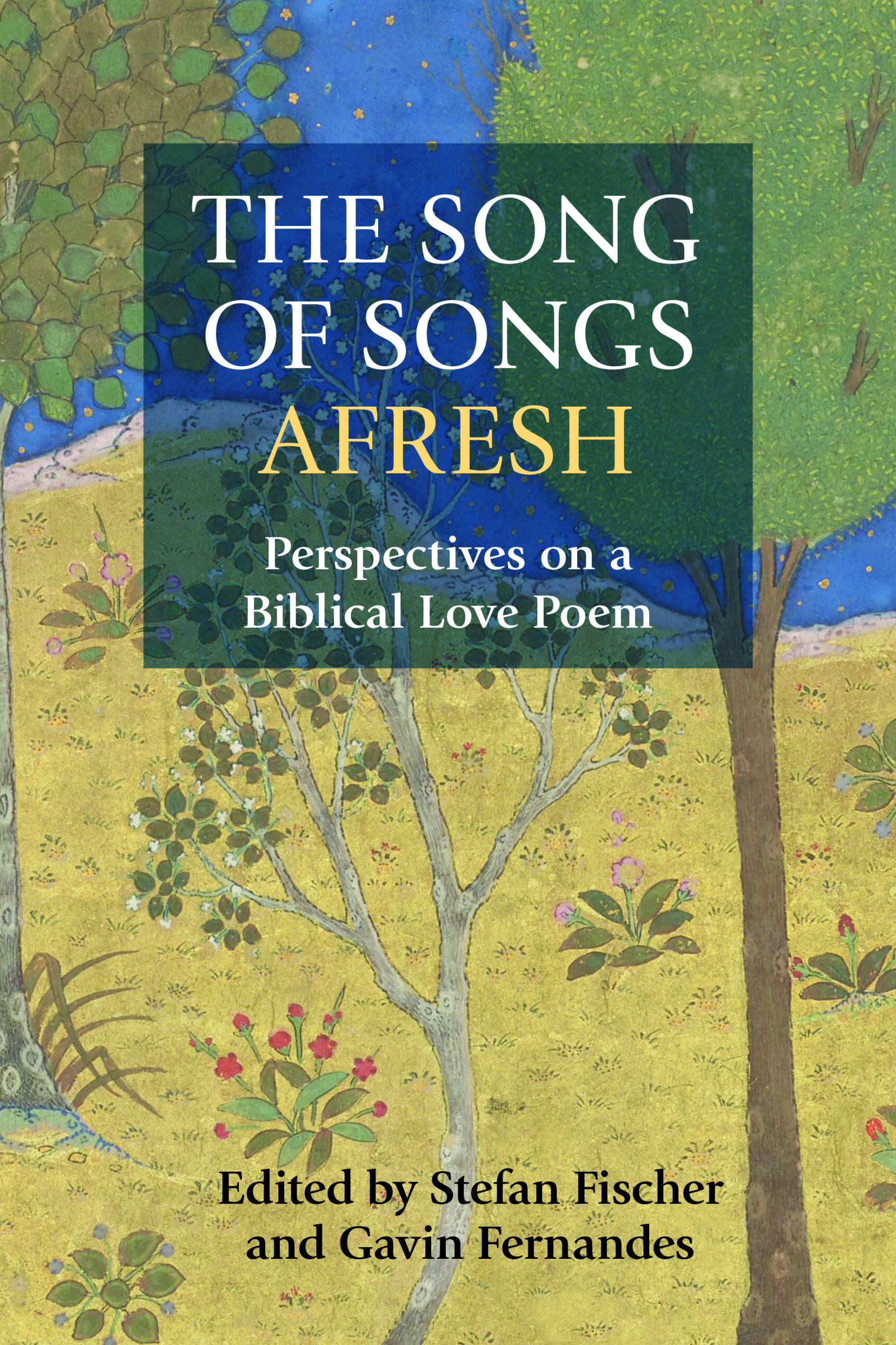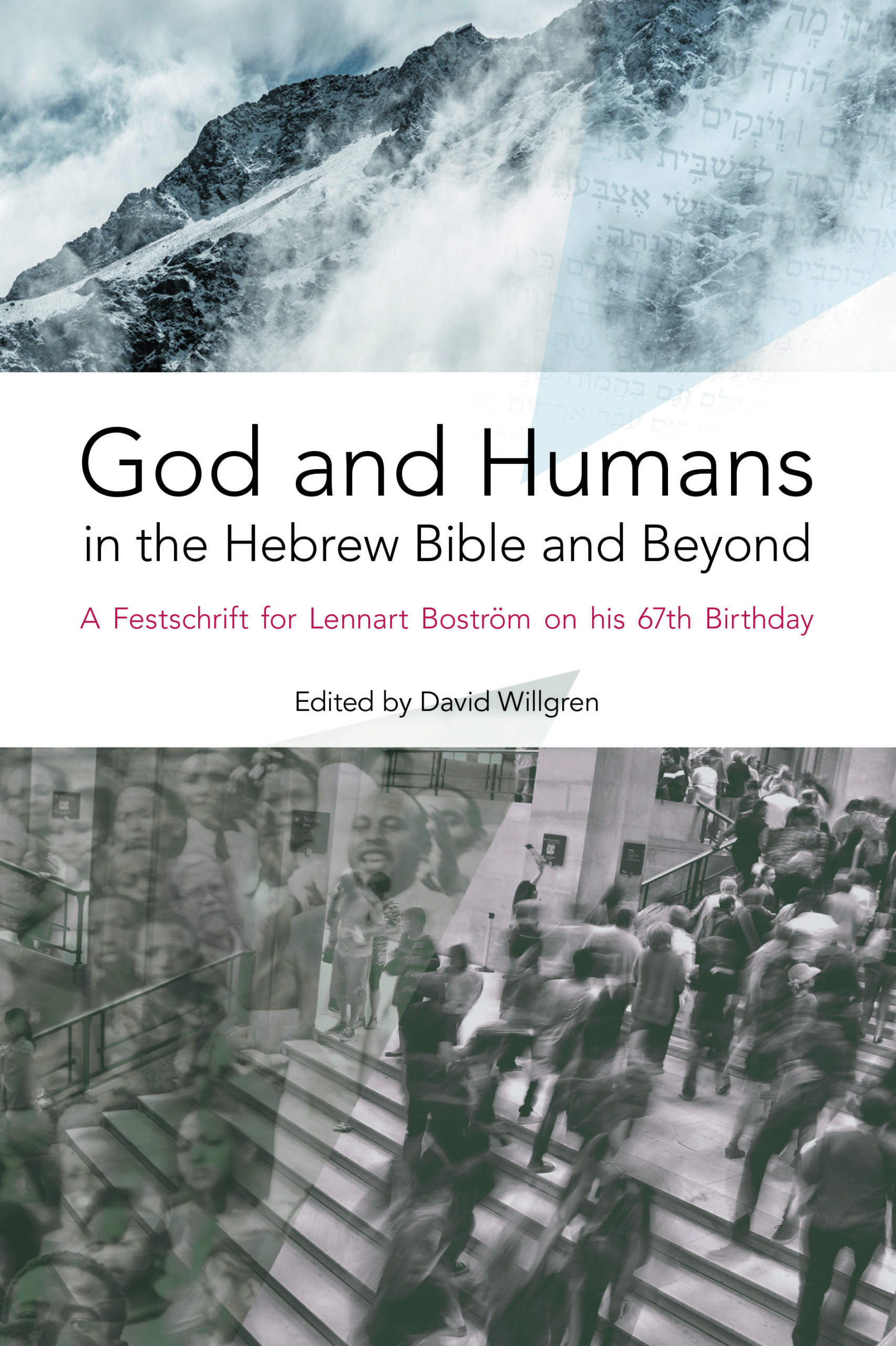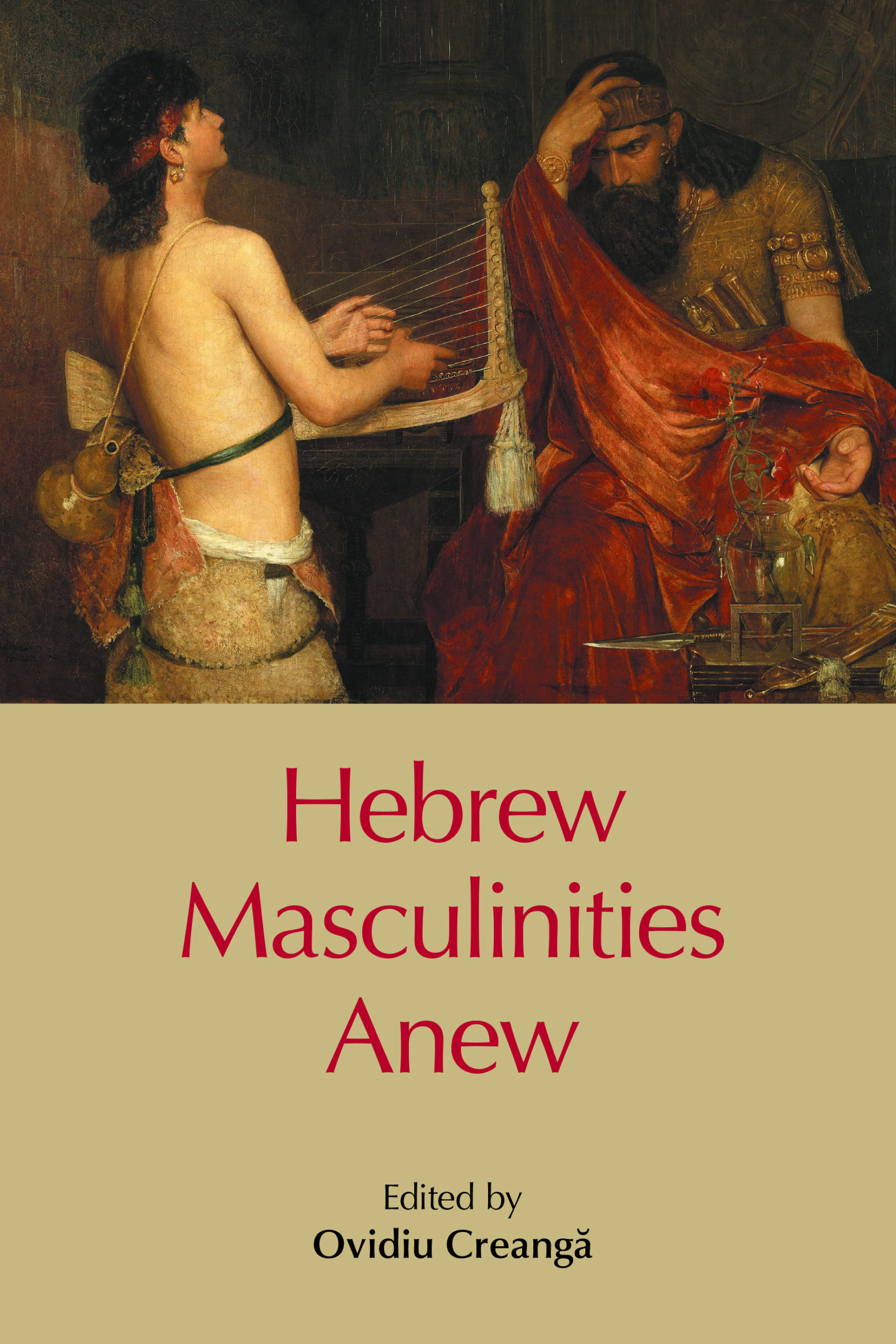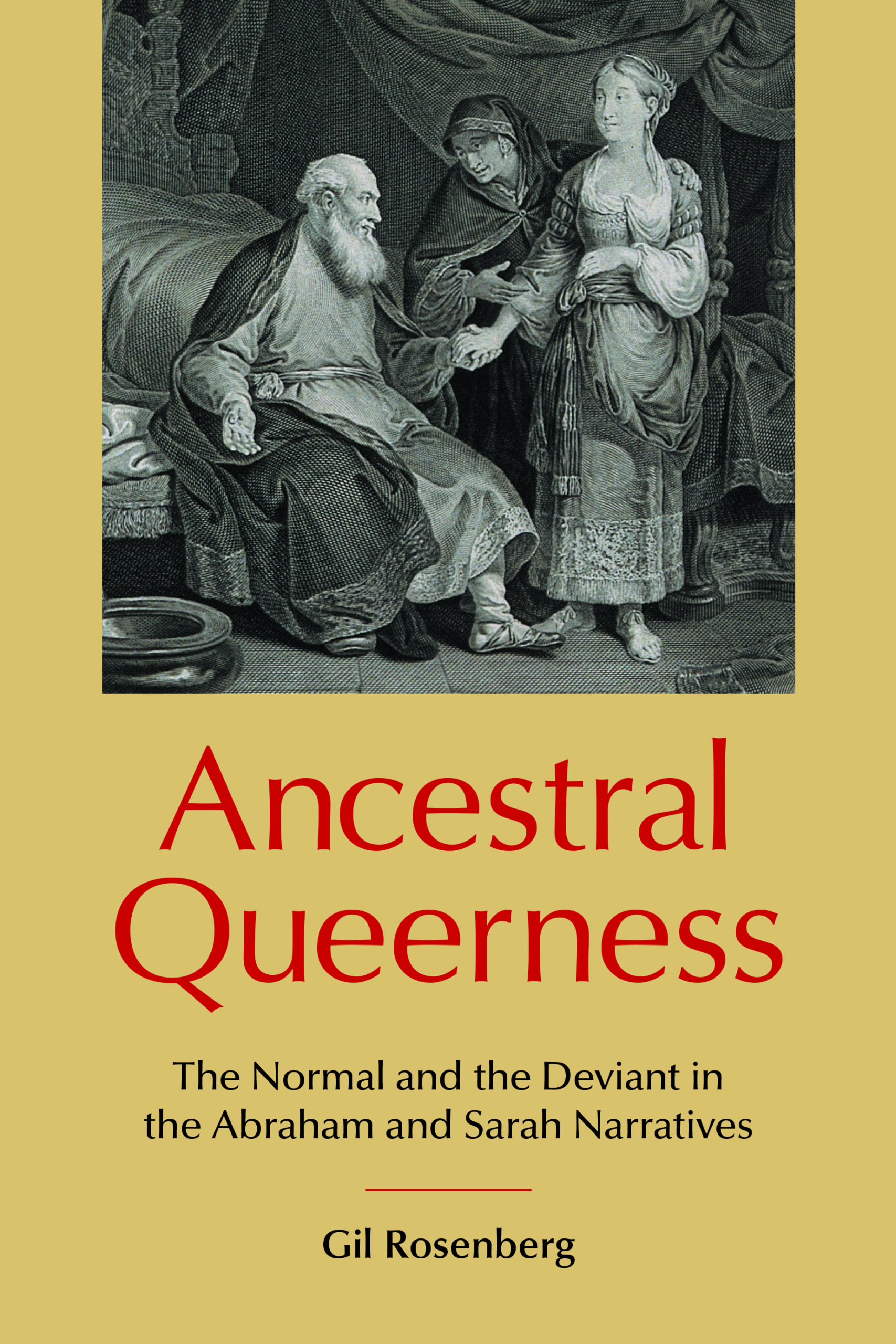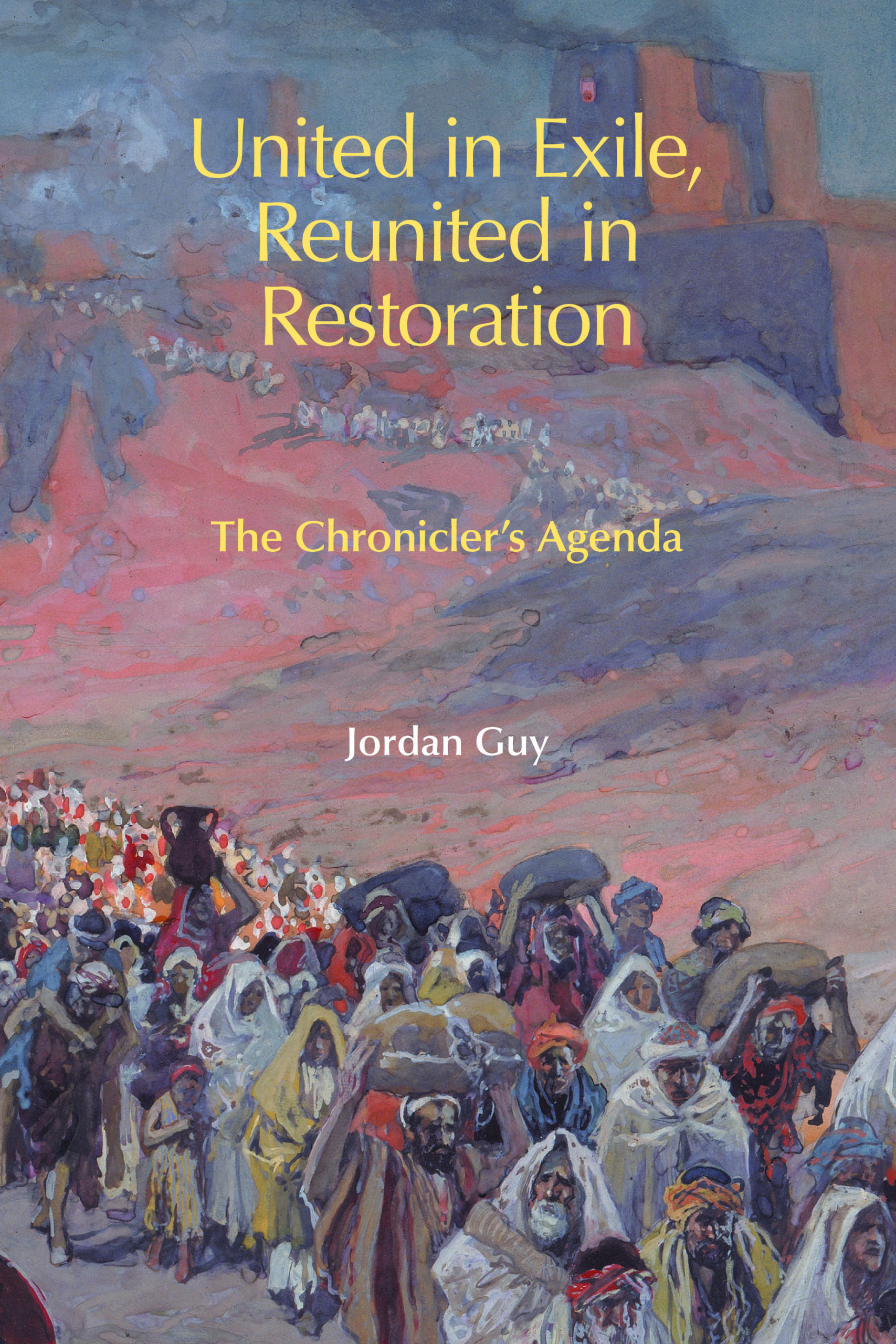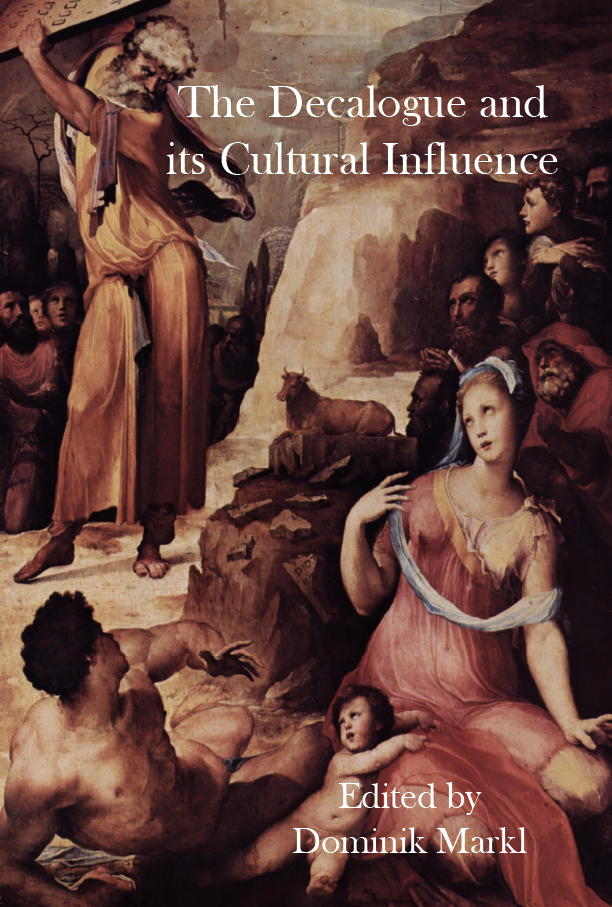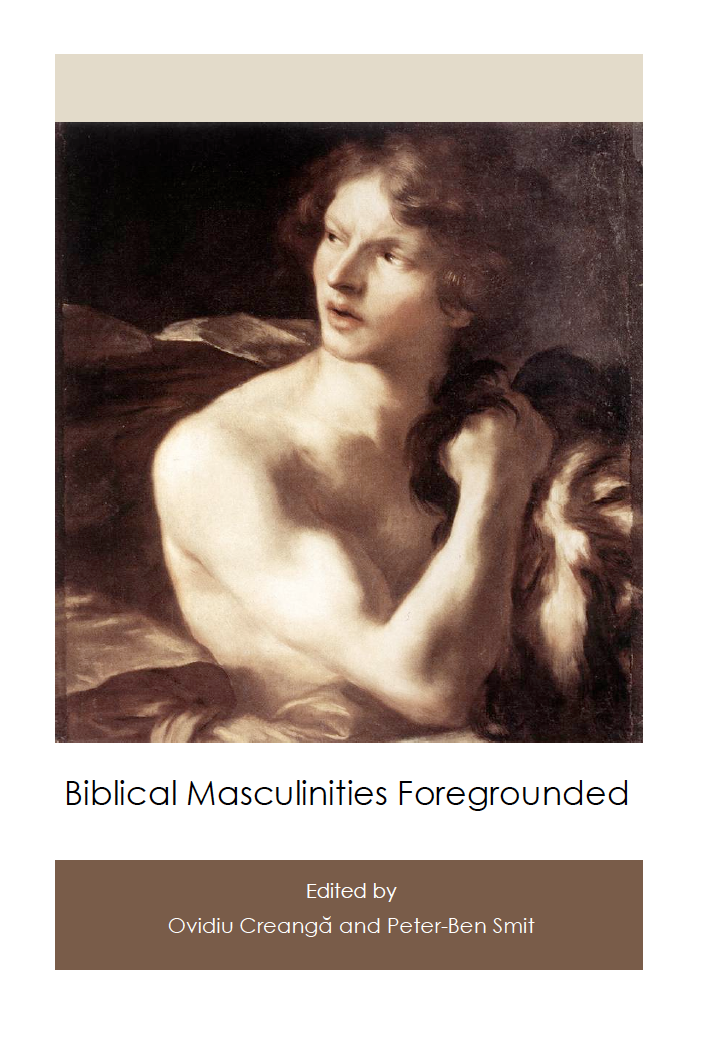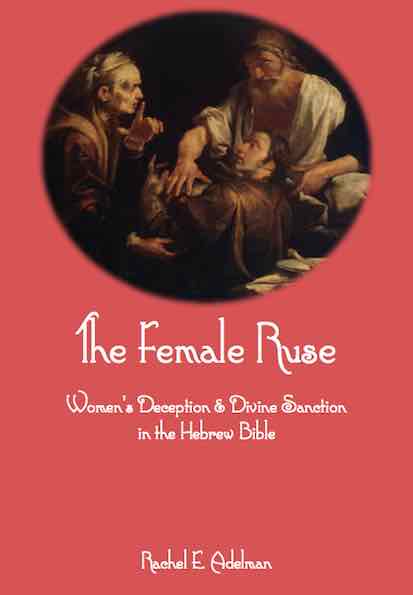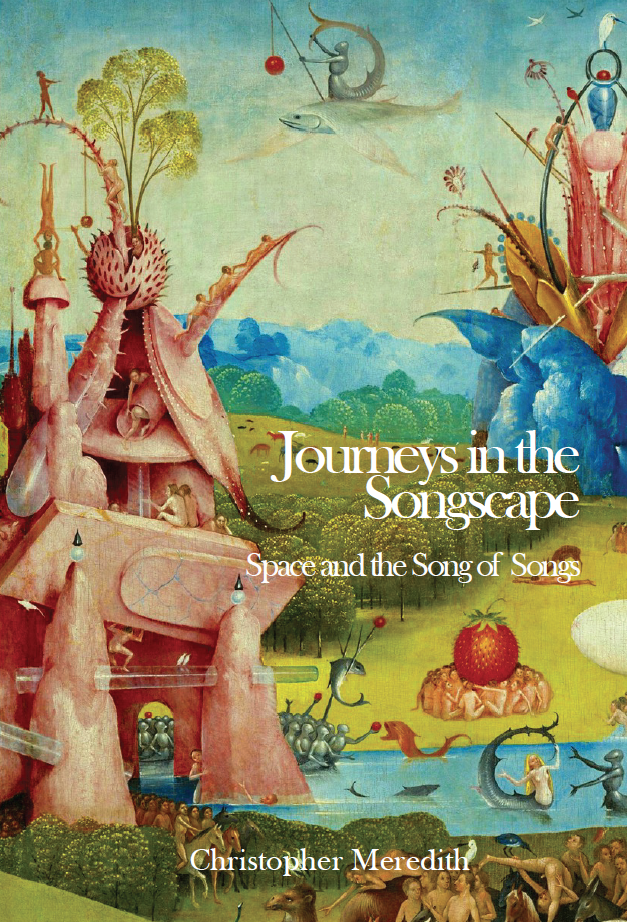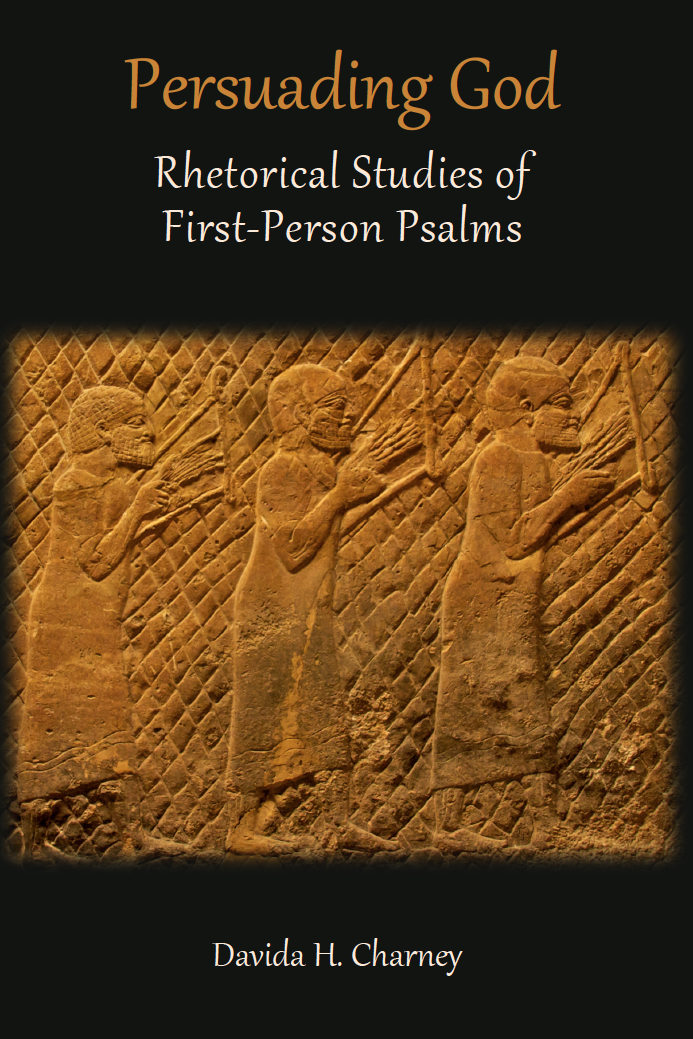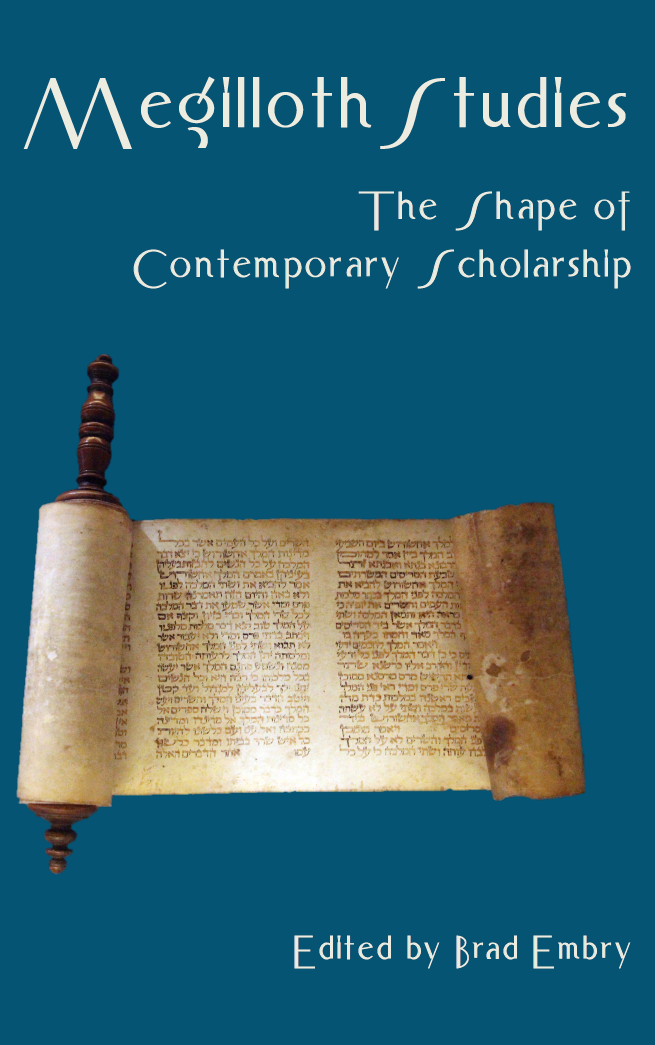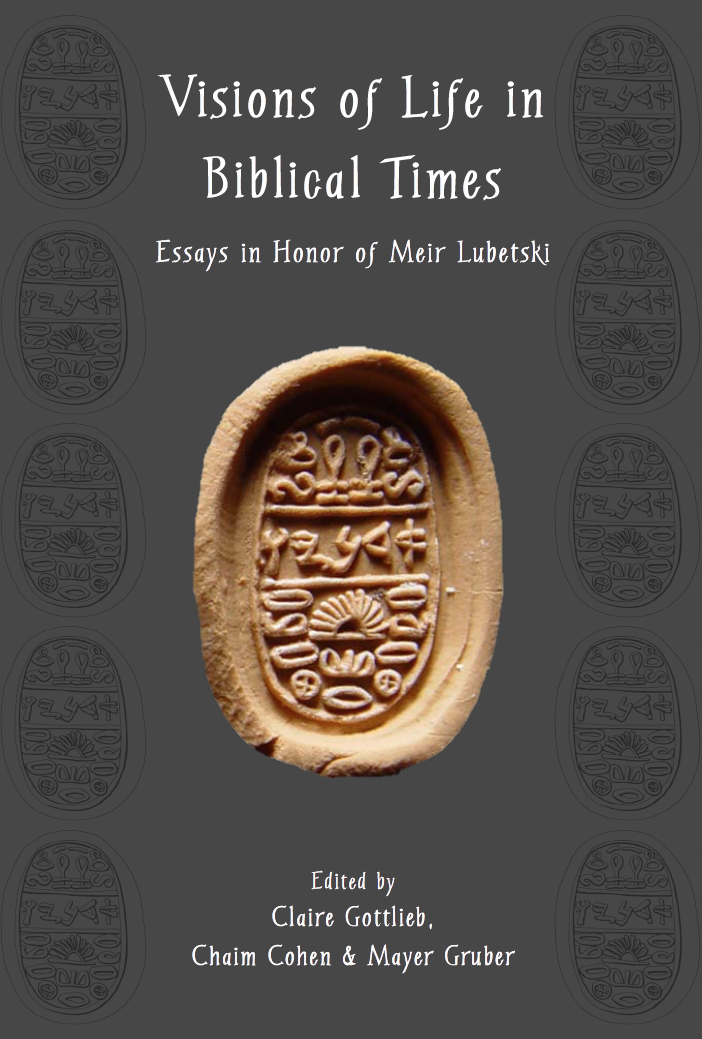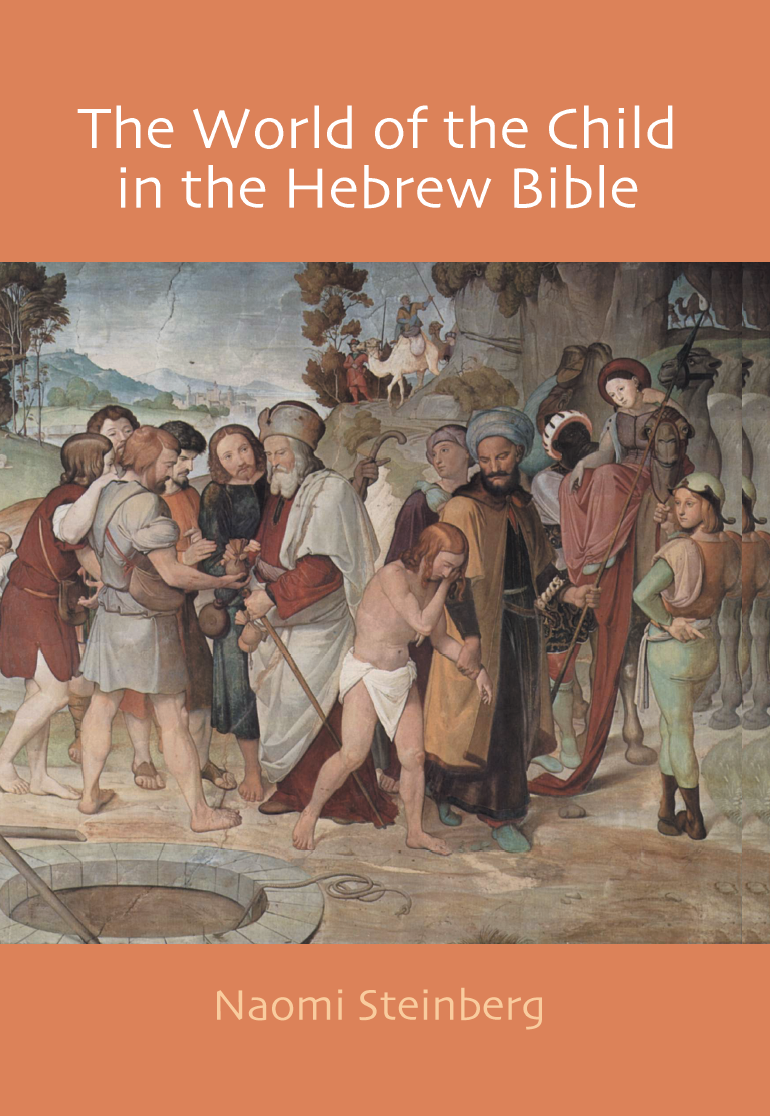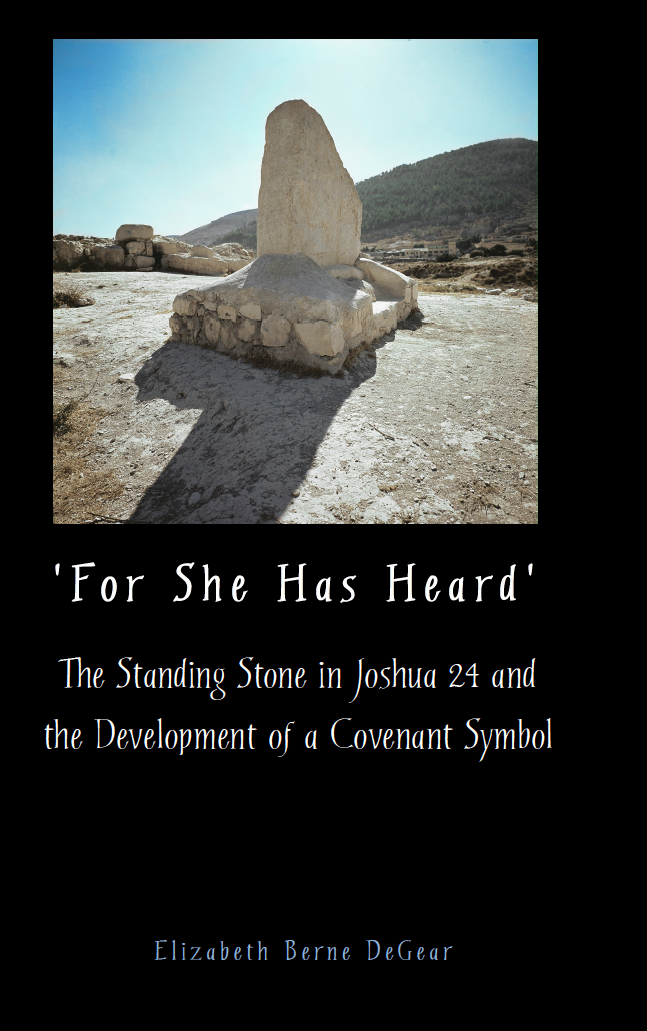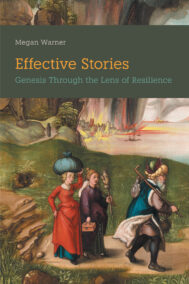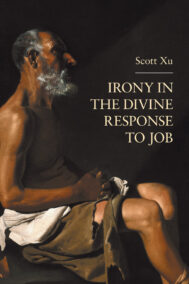Divine Election in the Hebrew Bible
Published: Nov 2019
£60.00
To citizens of the modern world the idea that someone or something might be especially elected by God seems problematic. If someone is elected, someone else is not elected. Does the God of all people have preferences? The idea that one particular nation should be elected by God is particularly difficult to accept.
Nevertheless, as this study intends to show, divine election is a central theme in the Hebrew Bible, and present in all its main parts. There are central acts of elections and less central acts of election. Abraham is elected as the founder of the people of Israel. Moses is elected as the ancestor of the religious and political people of Israel. David is elected as first of the Davidic kings. The election of these persons represents something more important than the persons themselves.
There are also other significant acts of election in the Hebrew Bible, especially the election of the land of Israel and of the city of Jerusalem. As well, there is the election of individuals such as the prophets. And even the Assyrians, the Babylonians and King Cyrus of Persia are presented as elected by God for special tasks.
A new full-length study of the important concept of divine election in the Hebrew Bible is long overdue, and Hagelia's readable and balanced monograph can be expected to bring the topic back into contemporary conversation.
Divine Election in the Hebrew Bible
£60.00
To citizens of the modern world the idea that someone or something might be especially elected by God seems problematic. If someone is elected, someone else is not elected. Does the God of all people have preferences? The idea that one particular nation should be elected by God is particularly difficult to accept.
Nevertheless, as this study intends to show, divine election is a central theme in the Hebrew Bible, and present in all its main parts. There are central acts of elections and less central acts of election. Abraham is elected as the founder of the people of Israel. Moses is elected as the ancestor of the religious and political people of Israel. David is elected as first of the Davidic kings. The election of these persons represents something more important than the persons themselves.
There are also other significant acts of election in the Hebrew Bible, especially the election of the land of Israel and of the city of Jerusalem. As well, there is the election of individuals such as the prophets. And even the Assyrians, the Babylonians and King Cyrus of Persia are presented as elected by God for special tasks.
A new full-length study of the important concept of divine election in the Hebrew Bible is long overdue, and Hagelia's readable and balanced monograph can be expected to bring the topic back into contemporary conversation.
The Subversive Chronicler: Narrative Film Theory and Canon Criticism Refocus his Intention
Published: Nov 2019
£55.00
In 1 and 2 Chronicles, commentators have long noted a pattern of retributive justice whereby kings who comply with Yahweh's will are rewarded with long life and honourable burial, whereas those who do not are disgraced. However, another pattern significantly emerges from a group of kings whose careers display an unexpected reversal. No convincing consensus has yet emerged to explain this reversal pattern.
By exploring and adopting the insights of narrative film theory, particularly of cognitive film semiotics, into the effects of macro-repetition, Son uncovers the implications of these unexpected reversals. As the reversal pattern is interwoven with the retributive pattern, the narrative emerges as a falsifying narration, provoking a deep scepticism about the conventional view of retribution theology.
Deleuzian film theory offers a crucial insight into how this falsifying narration works. The reversal pattern has a destabilizing effect, which suggests that the Chronicler's theological outlook is more nuanced than that of Samuel —Kings, or perhaps even frankly subversive of it. From a canonical perspective, furthermore, the presence of the Chronicler's work in the Ketuvim points to its potential function as a subtle theological readjustment in the postexilic Jewish community.
The Subversive Chronicler is then a challenge to the Chronicler's theology as it is commonly understood and also as a refocusing of its difference from the historiography of Samuel —Kings.
The Subversive Chronicler: Narrative Film Theory and Canon Criticism Refocus his Intention
£55.00
In 1 and 2 Chronicles, commentators have long noted a pattern of retributive justice whereby kings who comply with Yahweh's will are rewarded with long life and honourable burial, whereas those who do not are disgraced. However, another pattern significantly emerges from a group of kings whose careers display an unexpected reversal. No convincing consensus has yet emerged to explain this reversal pattern.
By exploring and adopting the insights of narrative film theory, particularly of cognitive film semiotics, into the effects of macro-repetition, Son uncovers the implications of these unexpected reversals. As the reversal pattern is interwoven with the retributive pattern, the narrative emerges as a falsifying narration, provoking a deep scepticism about the conventional view of retribution theology.
Deleuzian film theory offers a crucial insight into how this falsifying narration works. The reversal pattern has a destabilizing effect, which suggests that the Chronicler's theological outlook is more nuanced than that of Samuel —Kings, or perhaps even frankly subversive of it. From a canonical perspective, furthermore, the presence of the Chronicler's work in the Ketuvim points to its potential function as a subtle theological readjustment in the postexilic Jewish community.
The Subversive Chronicler is then a challenge to the Chronicler's theology as it is commonly understood and also as a refocusing of its difference from the historiography of Samuel —Kings.
The Song of Songs Afresh: Perspectives on a Biblical Love Poem
Published: Oct 2019
£60.00
This volume is one of the fruits of a six-year series of international conferences on the Song of Songs. The 13 diverse articles here being presented in four categories.
1. Classical exegetical studies. What does the blackness of the woman signify? Ausloos sees a tension between an exegetically appropriate and a politically correct interpretation, Biernot an example of Jewish discourse on blackness and whiteness ranging from antiquity to modern times. The function of the so-called dream in the Song is examined in the context of dreams in the ancient Near East with their two kinds of wake-up expressions (Fernandes). Fischer sees the daughters of Jerusalem as a means of identification for the reader and as placeholders for the young women of society. Next are intertextual readings of the Shulammite with a South African poem (Lombaard) and of the Song's vision of love with mythological traces in the Hebrew Bible (Mathys).
2. Post-modern exegetical studies. Included is a dialogue on horses in love and war (Landy and Metzler), a psychoanalytical reading on the theme of death (van der Zwan), and a blend of Ricoeur and cognitive metaphor theory that profiles the man in the Song (Verde).
3. Jewish studies. Baraniak studies the targumic exegesis, and DamohorskÌÁ the Song in Passover Piyyutim.
4. Hermeneutics. Responsible exegesis of the Song is Oosthuizen's theme, and Scheffler's is varieties of allegorizing.
The Song of Songs Afresh: Perspectives on a Biblical Love Poem
£60.00
This volume is one of the fruits of a six-year series of international conferences on the Song of Songs. The 13 diverse articles here being presented in four categories.
1. Classical exegetical studies. What does the blackness of the woman signify? Ausloos sees a tension between an exegetically appropriate and a politically correct interpretation, Biernot an example of Jewish discourse on blackness and whiteness ranging from antiquity to modern times. The function of the so-called dream in the Song is examined in the context of dreams in the ancient Near East with their two kinds of wake-up expressions (Fernandes). Fischer sees the daughters of Jerusalem as a means of identification for the reader and as placeholders for the young women of society. Next are intertextual readings of the Shulammite with a South African poem (Lombaard) and of the Song's vision of love with mythological traces in the Hebrew Bible (Mathys).
2. Post-modern exegetical studies. Included is a dialogue on horses in love and war (Landy and Metzler), a psychoanalytical reading on the theme of death (van der Zwan), and a blend of Ricoeur and cognitive metaphor theory that profiles the man in the Song (Verde).
3. Jewish studies. Baraniak studies the targumic exegesis, and DamohorskÌÁ the Song in Passover Piyyutim.
4. Hermeneutics. Responsible exegesis of the Song is Oosthuizen's theme, and Scheffler's is varieties of allegorizing.
God and Humans in the Hebrew Bible and Beyond: A Festschrift for Lennart Boström on his 67th Birthday
Published: Sep 2019
£70.00
In 1990, in his important study The God of the Sages: The Portrayal of God in the Book of Proverbs, Lennart Boström tackled the issue of how the sages viewed their God and God's relationship with the world. In honour of Boström, and in line with that study, this Festschrift takes up this issue anew. A number of international specialists, including James Crenshaw, Göran Eidevall, Mark A. Throntveit, and Antti Laato, discuss various aspects of how God and humans are portrayed in the Bible.
The first section of the book focuses on notions of God. There is a fresh look at monolatry in the Hebrew Bible, and at God's faithfulness in Paul's soteriology. The second section deals with humans, featuring, for example, two articles on Psalm 8.5, one with a focus on the Hebrew Bible, and the other reading the psalm through the eyes of women in Myanmar. There is also an article on angst in wisdom literature.
The third section brings God and humans into dialogue, looking at how various interpretations of suffering in the psalms shape the view of the divine —human relationship, or how God and humans relate to each other in books like Jonah and Ruth. The fourth and last section of the book focuses on God and God's people, where new proposals are presented on the roles played by Zion and by the ten commandments.
This volume presents stimulating and up-to-date engagements with its theme, an excellent resource for scholars of both the Hebrew Bible and the New Testament.
God and Humans in the Hebrew Bible and Beyond: A Festschrift for Lennart Boström on his 67th Birthday
£70.00
In 1990, in his important study The God of the Sages: The Portrayal of God in the Book of Proverbs, Lennart Boström tackled the issue of how the sages viewed their God and God's relationship with the world. In honour of Boström, and in line with that study, this Festschrift takes up this issue anew. A number of international specialists, including James Crenshaw, Göran Eidevall, Mark A. Throntveit, and Antti Laato, discuss various aspects of how God and humans are portrayed in the Bible.
The first section of the book focuses on notions of God. There is a fresh look at monolatry in the Hebrew Bible, and at God's faithfulness in Paul's soteriology. The second section deals with humans, featuring, for example, two articles on Psalm 8.5, one with a focus on the Hebrew Bible, and the other reading the psalm through the eyes of women in Myanmar. There is also an article on angst in wisdom literature.
The third section brings God and humans into dialogue, looking at how various interpretations of suffering in the psalms shape the view of the divine —human relationship, or how God and humans relate to each other in books like Jonah and Ruth. The fourth and last section of the book focuses on God and God's people, where new proposals are presented on the roles played by Zion and by the ten commandments.
This volume presents stimulating and up-to-date engagements with its theme, an excellent resource for scholars of both the Hebrew Bible and the New Testament.
Hebrew Masculinities Anew
Published: Jun 2019
£65.00
The study of biblical masculinities is now a clearly recognizable discipline in critical biblical gender studies. This book, the third in a series of SPP volumes that include Men and Masculinity in the Hebrew Bible and Beyond (ed. Ovidiu Creangă, 2010) and Biblical Masculinities Foregrounded (ed. Ovidiu Creangă and Peter-Ben Smit, 2014), takes stock of recent methodological and thematic developments, while introducing fresh new questions, expanding traditional approaches, and adding new texts to the corpus of masculinities in the Hebrew Bible.
The volume's introduction (Ovidiu Creangă) celebrates the rich palette of approaches and disciplinary intersections that now characterize the study of Hebrew Bible masculinities, while calling attention to understudied topics. The next thirteen chapters dig deep into the methodological building-blocks underpinning biblical masculinity (Stephen Wilson); the theoretically essential distinction between queer and non-queer masculinities (Gil Rosenberg); the often-neglected yet essential representation of God's masculinity (David J.A. Clines); the competing masculinities of God, Pharaoh, and Moses in historical and lesbian perspective (Caralie Focht and Richard Purcell); Queen Jezebel's performance of masculinity (Hilary Lipka); Priestly and Deuteronomic fantasies of male perfection (Sandra Jacobs); the problem-ridden masculinity of Moses (Amy Kalmanofsky); the rhetoric of 'queen-making' in the prophetic literature (Susan E. Haddox); Jonah's homosocial masculinity (Rhiannon Graybill); the scribal masculinity of Daniel (Brian C. DiPalma); the ephemeral masculinity of mortal men (Milena Kirova); the masculine agencies in the Song of Songs (Martti Nissinen); and the intertwining of money and masculinity in the Book of Proverbs (Kelly Murphy). In the final chapter, Stuart Macwilliam reflects on methodological opportunities, thematic expansions, and a future direction for biblical masculinities.
Hebrew Masculinities Anew
£65.00
The study of biblical masculinities is now a clearly recognizable discipline in critical biblical gender studies. This book, the third in a series of SPP volumes that include Men and Masculinity in the Hebrew Bible and Beyond (ed. Ovidiu Creangă, 2010) and Biblical Masculinities Foregrounded (ed. Ovidiu Creangă and Peter-Ben Smit, 2014), takes stock of recent methodological and thematic developments, while introducing fresh new questions, expanding traditional approaches, and adding new texts to the corpus of masculinities in the Hebrew Bible.
The volume's introduction (Ovidiu Creangă) celebrates the rich palette of approaches and disciplinary intersections that now characterize the study of Hebrew Bible masculinities, while calling attention to understudied topics. The next thirteen chapters dig deep into the methodological building-blocks underpinning biblical masculinity (Stephen Wilson); the theoretically essential distinction between queer and non-queer masculinities (Gil Rosenberg); the often-neglected yet essential representation of God's masculinity (David J.A. Clines); the competing masculinities of God, Pharaoh, and Moses in historical and lesbian perspective (Caralie Focht and Richard Purcell); Queen Jezebel's performance of masculinity (Hilary Lipka); Priestly and Deuteronomic fantasies of male perfection (Sandra Jacobs); the problem-ridden masculinity of Moses (Amy Kalmanofsky); the rhetoric of 'queen-making' in the prophetic literature (Susan E. Haddox); Jonah's homosocial masculinity (Rhiannon Graybill); the scribal masculinity of Daniel (Brian C. DiPalma); the ephemeral masculinity of mortal men (Milena Kirova); the masculine agencies in the Song of Songs (Martti Nissinen); and the intertwining of money and masculinity in the Book of Proverbs (Kelly Murphy). In the final chapter, Stuart Macwilliam reflects on methodological opportunities, thematic expansions, and a future direction for biblical masculinities.
Ancestral Queerness: The Normal and the Deviant in the Abraham and Sarah Narratives
Published: May 2019
£50.00
What would it look like to be queer in the time of Abraham and Sarah? What is normative and what is deviant in their stories? What does this have to do with queer lives today?
In Ancestral Queerness, Gil Rosenberg uses a careful comparative method to develop a cross-cultural queer category ('Queer'). He applies this category to Abraham and Sarah and argues that, Abraham and Sarah may usefully be regarded as 'Queer'.
Rosenberg's comparisons draw on a variety of contemporary queer stories, scholarship, and theories. These include a lesbian mother trying to support her partner and newborn daughter, Australian polyamorous families, Lee Edelman's figure of the Child, and gay men building families through surrogacy.
These comparisons lead Rosenberg to surprising new interpretations of several key passages in Genesis 11 —21. For example, he argues that Abraham wants to hide his marriage to Sarah because their relationship is a queer one, and that Sarah may not actually be wanting a biological child. Rosenberg also highlights the combination of normative and deviant elements in Abraham's strategies for obtaining an heir, and the role of ethnic and class difference in Abraham's and Sarah's efforts to become more normative.
Bold in its conclusions but careful and precise in its method, Ancestral Queerness breaks new ground by developing a queer theory applicable to diverse cultures, revealing the bias in previous scholarship on Abraham and Sarah, and opening up new paths of interpretation in their narratives.
Ancestral Queerness: The Normal and the Deviant in the Abraham and Sarah Narratives
£50.00
What would it look like to be queer in the time of Abraham and Sarah? What is normative and what is deviant in their stories? What does this have to do with queer lives today?
In Ancestral Queerness, Gil Rosenberg uses a careful comparative method to develop a cross-cultural queer category ('Queer'). He applies this category to Abraham and Sarah and argues that, Abraham and Sarah may usefully be regarded as 'Queer'.
Rosenberg's comparisons draw on a variety of contemporary queer stories, scholarship, and theories. These include a lesbian mother trying to support her partner and newborn daughter, Australian polyamorous families, Lee Edelman's figure of the Child, and gay men building families through surrogacy.
These comparisons lead Rosenberg to surprising new interpretations of several key passages in Genesis 11 —21. For example, he argues that Abraham wants to hide his marriage to Sarah because their relationship is a queer one, and that Sarah may not actually be wanting a biological child. Rosenberg also highlights the combination of normative and deviant elements in Abraham's strategies for obtaining an heir, and the role of ethnic and class difference in Abraham's and Sarah's efforts to become more normative.
Bold in its conclusions but careful and precise in its method, Ancestral Queerness breaks new ground by developing a queer theory applicable to diverse cultures, revealing the bias in previous scholarship on Abraham and Sarah, and opening up new paths of interpretation in their narratives.
United in Exile, Reunited in Restoration: The Chronicler’s Agenda
Published: May 2019
£50.00
The books of 1 —2 Chronicles, though ostensibly a history work recounting the past, is in reality a challenge to its fourth-century Jewish audience in Babylonia to make a vital decision about their future. They are presented with the choice of remaining in exile, where they have been born, or of uprooting themselves and travelling to their ancestral but unknown land.
By introducing unique accounts of exile, such as that of the Reubenite leader Beerah (1 Chron. 5), and by reinterpreting familiar accounts of forced migration, such as the Babylonian exile of 'all Israel', the Chronicler reveals the current state of Israel in exile. As he looks into the future, he inserts pleas for restoration on the lips of Hebrew heroes such as David and Hezekiah, along with stories of transformation, like Manasseh's return from humiliating captivity, to educate his readers about their role in completing the process of restoration for all Israel.
Since the exile meant Jerusalem's reduction, the end of the Davidic monarchy, and the scattering of tribal Israel, restoration would mean 'all Israel' reunited in Jerusalem under the levitical priesthood in worship at the rebuilt temple. Cyrus's decree, inspired by Yahweh, had commanded that all God's people 'go up', but Second Temple Israel had stalled somewhere between exile and restoration. Therefore, the Chronicler urges all Diaspora Israel to return home.
Previous studies of the exile —restoration theme in segments of Chronicles (mainly 2 Chron. 36) and in Chronicles —Ezra —Nehemiah have led to the distorted view that the Chronicler is proclaiming victory over exile. Heard on his own terms, the Chronicler is rather dissatisfied with Israel's current state of restoration, optimistic that reunion in Jerusalem will conclude the exile, and adamant that 'all Israel' must take responsibility for the nation's sin and judgment —and restoration.
United in Exile, Reunited in Restoration: The Chronicler’s Agenda
£50.00
The books of 1 —2 Chronicles, though ostensibly a history work recounting the past, is in reality a challenge to its fourth-century Jewish audience in Babylonia to make a vital decision about their future. They are presented with the choice of remaining in exile, where they have been born, or of uprooting themselves and travelling to their ancestral but unknown land.
By introducing unique accounts of exile, such as that of the Reubenite leader Beerah (1 Chron. 5), and by reinterpreting familiar accounts of forced migration, such as the Babylonian exile of 'all Israel', the Chronicler reveals the current state of Israel in exile. As he looks into the future, he inserts pleas for restoration on the lips of Hebrew heroes such as David and Hezekiah, along with stories of transformation, like Manasseh's return from humiliating captivity, to educate his readers about their role in completing the process of restoration for all Israel.
Since the exile meant Jerusalem's reduction, the end of the Davidic monarchy, and the scattering of tribal Israel, restoration would mean 'all Israel' reunited in Jerusalem under the levitical priesthood in worship at the rebuilt temple. Cyrus's decree, inspired by Yahweh, had commanded that all God's people 'go up', but Second Temple Israel had stalled somewhere between exile and restoration. Therefore, the Chronicler urges all Diaspora Israel to return home.
Previous studies of the exile —restoration theme in segments of Chronicles (mainly 2 Chron. 36) and in Chronicles —Ezra —Nehemiah have led to the distorted view that the Chronicler is proclaiming victory over exile. Heard on his own terms, the Chronicler is rather dissatisfied with Israel's current state of restoration, optimistic that reunion in Jerusalem will conclude the exile, and adamant that 'all Israel' must take responsibility for the nation's sin and judgment —and restoration.
The Decalogue and its Cultural Influence
Published: Oct 2017
Price range: £33.00 through £70.00
Reception history is one of the most inviting, yet also one of the most difficult, fields in the study of the Bible today. It is difficult because it involves so many layers of expertise. The reception-historian does not only need a comprehensive knowledge and understanding of the biblical text itself, but also familiarity with the cultures and intellectual background of the many diverse ages in which it has been read and appropriated; and in addition needs to be versed in media other than writing, including the visual and performing arts.
But it is inviting because it carries its practitioners so far beyond the confines of ordinary textual study, with its concern for language and text, and out into an ocean of interdisciplinary engagement with writings that have, after all, stimulated the imaginations as well as the intellects of generations of religious (and non-religious) readers. The Decalogue is an obvious candidate for a reception-historical treatment. It has acquired over the centuries an enormous weight of commentary, and has been assimilated into the most varied cultures. Though a text, it has often also been an icon, appearing on walls in churches and now even in American courthouses. The subject was ripe for study, and the conference at which the papers in this book were delivered marked a significant milestone in biblical reception history' (from John Barton's Preface to the volume).
The 21 papers in this volume offer the richest and most wide-ranging interdisciplinary collection of studies on the reception of the Decalogue in culture, and will prove to be a fundamental resource for students of the biblical text and of the reception of the Bible in general.
The Decalogue and its Cultural Influence
Price range: £33.00 through £70.00
Reception history is one of the most inviting, yet also one of the most difficult, fields in the study of the Bible today. It is difficult because it involves so many layers of expertise. The reception-historian does not only need a comprehensive knowledge and understanding of the biblical text itself, but also familiarity with the cultures and intellectual background of the many diverse ages in which it has been read and appropriated; and in addition needs to be versed in media other than writing, including the visual and performing arts.
But it is inviting because it carries its practitioners so far beyond the confines of ordinary textual study, with its concern for language and text, and out into an ocean of interdisciplinary engagement with writings that have, after all, stimulated the imaginations as well as the intellects of generations of religious (and non-religious) readers. The Decalogue is an obvious candidate for a reception-historical treatment. It has acquired over the centuries an enormous weight of commentary, and has been assimilated into the most varied cultures. Though a text, it has often also been an icon, appearing on walls in churches and now even in American courthouses. The subject was ripe for study, and the conference at which the papers in this book were delivered marked a significant milestone in biblical reception history' (from John Barton's Preface to the volume).
The 21 papers in this volume offer the richest and most wide-ranging interdisciplinary collection of studies on the reception of the Decalogue in culture, and will prove to be a fundamental resource for students of the biblical text and of the reception of the Bible in general.
Biblical Masculinities Foregrounded
Published: Oct 2017
Price range: £25.00 through £65.00
Biblical Masculinities Foregrounded brings together ten innovative studies on varieties of masculinity evidenced in the Hebrew Bible, the New Testament and other early Christian writings. A sequel to the 2010 collection, Men and Masculinity in the Hebrew Bible and Beyond, this new volume raises important questions about why the study of biblical masculinities matters, what it contributes to our knowledge of the ancient writers' world as well as to our contemporary world, and which methods adequately attend to that study. The volume is designed as a resource for scholars of both Testaments working from a variety of biblical traditions and ideological perspectives on masculinity.
The following studies are offered as companions in the conversation: Yahweh's masculinity in appearances in glory in Exodus and Ezekiel (Alan Hooker); Proverbs' (de)construction of masculinity (Hilary Lipka); Saul's troubled masculinity in 1 —2 Samuel (Marcel M€Äcelaru); weeping men in the Torah and the Deuteronomistic history (Milena Kirova); Athaliah's manly rule (Stuart Macwilliam); Joseph of Nazareth as an everyday man (Justin Glessner); being a male disciple in Matthew's 'antitheses' (Hans-Ulrich Weidemann); eunuch masculinity in Matthew's Gospel (Susanna Asikainen); masculinity and circumcision in the first century (Karin Neutel and Matthew Anderson); and Thecla's masculinity in the Acts of Thecla (Peter-Ben Smit). Ovidiu Creangă opens the volume with a critical appraisal of the current state of play in the field, while Martti Nissinen and Bjorn Krondorfer offer closing critical reflections that situate the book's topics within broader debates regarding masculinities in religious studies.
Biblical Masculinities Foregrounded
Price range: £25.00 through £65.00
Biblical Masculinities Foregrounded brings together ten innovative studies on varieties of masculinity evidenced in the Hebrew Bible, the New Testament and other early Christian writings. A sequel to the 2010 collection, Men and Masculinity in the Hebrew Bible and Beyond, this new volume raises important questions about why the study of biblical masculinities matters, what it contributes to our knowledge of the ancient writers' world as well as to our contemporary world, and which methods adequately attend to that study. The volume is designed as a resource for scholars of both Testaments working from a variety of biblical traditions and ideological perspectives on masculinity.
The following studies are offered as companions in the conversation: Yahweh's masculinity in appearances in glory in Exodus and Ezekiel (Alan Hooker); Proverbs' (de)construction of masculinity (Hilary Lipka); Saul's troubled masculinity in 1 —2 Samuel (Marcel M€Äcelaru); weeping men in the Torah and the Deuteronomistic history (Milena Kirova); Athaliah's manly rule (Stuart Macwilliam); Joseph of Nazareth as an everyday man (Justin Glessner); being a male disciple in Matthew's 'antitheses' (Hans-Ulrich Weidemann); eunuch masculinity in Matthew's Gospel (Susanna Asikainen); masculinity and circumcision in the first century (Karin Neutel and Matthew Anderson); and Thecla's masculinity in the Acts of Thecla (Peter-Ben Smit). Ovidiu Creangă opens the volume with a critical appraisal of the current state of play in the field, while Martti Nissinen and Bjorn Krondorfer offer closing critical reflections that situate the book's topics within broader debates regarding masculinities in religious studies.
The Female Ruse: Women’s Deception and Divine Sanction in the Hebrew Bible
Published: Sep 2017
Price range: £25.00 through £60.00
From Eve to Esther, the Hebrew Bible is replete with gendered tales of trickery. A lie is uttered, a mask donned, a seduction staged, while redemption is propelled forward, guided by the divine hand. From the first 'female ruse' — Eve presenting the fruit of the tree of knowledge to Adam — humanity becomes embodied, engaged in history, moving from the Garden to exile, from wandering to homeland and redemption (and back again). Consider Rebekah dressing her beloved son in goatskins to steal the blessing from his blind father; Lot's daughters lying with their drunken father, and then conceiving the founding fathers of Ammon and Moab; Leah and Rachel, the mothers of the twelve tribes of Israel, duping Jacob on their wedding night; Tamar's seduction of Judah, her father-in-law, who then bears the progenitor of the Davidic line; Naomi sending Ruth to the threshing floor to seduce Boaz by night; Bathsheba invoking an oath that King David had supposedly made in order to forward Solomon, her son, as successor to the monarchy; and Queen Esther concealing her Jewish identity in the Persian imperial court. Over the course of nine chapters, the author traces these narratives of deception; in each case, God is in cahoots with these feminine agents in advancing the providential plan. A tension holds between the 'best laid plans' of men and the divine will as forwarded by women. Drawing on classic rabbinic sources and modern literary exegesis, the author exposes the conflict between the simple progression of genealogies and the process of selection through alliances of family and kin. Women are at the crux of that conflict, seemingly compelled to choose the indirect route while the deity appears to endorse their lie.
The Female Ruse: Women’s Deception and Divine Sanction in the Hebrew Bible
Price range: £25.00 through £60.00
From Eve to Esther, the Hebrew Bible is replete with gendered tales of trickery. A lie is uttered, a mask donned, a seduction staged, while redemption is propelled forward, guided by the divine hand. From the first 'female ruse' — Eve presenting the fruit of the tree of knowledge to Adam — humanity becomes embodied, engaged in history, moving from the Garden to exile, from wandering to homeland and redemption (and back again). Consider Rebekah dressing her beloved son in goatskins to steal the blessing from his blind father; Lot's daughters lying with their drunken father, and then conceiving the founding fathers of Ammon and Moab; Leah and Rachel, the mothers of the twelve tribes of Israel, duping Jacob on their wedding night; Tamar's seduction of Judah, her father-in-law, who then bears the progenitor of the Davidic line; Naomi sending Ruth to the threshing floor to seduce Boaz by night; Bathsheba invoking an oath that King David had supposedly made in order to forward Solomon, her son, as successor to the monarchy; and Queen Esther concealing her Jewish identity in the Persian imperial court. Over the course of nine chapters, the author traces these narratives of deception; in each case, God is in cahoots with these feminine agents in advancing the providential plan. A tension holds between the 'best laid plans' of men and the divine will as forwarded by women. Drawing on classic rabbinic sources and modern literary exegesis, the author exposes the conflict between the simple progression of genealogies and the process of selection through alliances of family and kin. Women are at the crux of that conflict, seemingly compelled to choose the indirect route while the deity appears to endorse their lie.
Journeys in the Songscape: Space and the Song of Songs
Published: Sep 2017
Price range: £20.00 through £60.00
The poetic world of the Song of Songs is a famously heady and distortive landscape, filled with bright sunlit rills, nocturnal cityscapes, and fecund bodies laid out like kingdoms. But what does the Song's use and abuse of spatial relationships tell us about its subject matter, and what do its strange panoramas tell us about literary space more broadly? Directly challenging recent methodological trends in biblical spatial studies, Journeys in the Songscape uses a range of innovative critical tools to explore, map and critique poetic space in the Song of Songs.
Taking the reader on a series of journeys across the Song's gendered, rural, urban and bodily spaces, Meredith argues that the worlds that spring up between the Song's lovers are all subtle reimaginings of the space between the biblical page and its own readers, and that at the heart of the Song is a (con)fusion of the dynamics of loving with the experience of reading. Love is at work in the Song, says Meredith, but it is not its subject so much as a sign under which collusions of power, textuality, space and subjectivity labour. The Song's world speaks not only to sexual relationships, then, but to the structure of language itself; textual spaces do not organize textual meaning but rather image its fundamental instability.
Journeys in the Songscape is a bold new literary treatment of the Song of Songs, but it is also a rethinking of what we mean by the term 'literary space', and represents a playful incitement to reconsider how critical tools are put to use in apprehending space as a literary construct.
Journeys in the Songscape: Space and the Song of Songs
Price range: £20.00 through £60.00
The poetic world of the Song of Songs is a famously heady and distortive landscape, filled with bright sunlit rills, nocturnal cityscapes, and fecund bodies laid out like kingdoms. But what does the Song's use and abuse of spatial relationships tell us about its subject matter, and what do its strange panoramas tell us about literary space more broadly? Directly challenging recent methodological trends in biblical spatial studies, Journeys in the Songscape uses a range of innovative critical tools to explore, map and critique poetic space in the Song of Songs.
Taking the reader on a series of journeys across the Song's gendered, rural, urban and bodily spaces, Meredith argues that the worlds that spring up between the Song's lovers are all subtle reimaginings of the space between the biblical page and its own readers, and that at the heart of the Song is a (con)fusion of the dynamics of loving with the experience of reading. Love is at work in the Song, says Meredith, but it is not its subject so much as a sign under which collusions of power, textuality, space and subjectivity labour. The Song's world speaks not only to sexual relationships, then, but to the structure of language itself; textual spaces do not organize textual meaning but rather image its fundamental instability.
Journeys in the Songscape is a bold new literary treatment of the Song of Songs, but it is also a rethinking of what we mean by the term 'literary space', and represents a playful incitement to reconsider how critical tools are put to use in apprehending space as a literary construct.
Persuading God: Rhetorical Studies of First-Person Psalms
Published: Sep 2017
Price range: £19.00 through £45.00
Written by a scholar of rhetoric, Persuading God demonstrates that the first-person psalms that make up over a third of the Book of Psalms were designed not simply to express the feelings of individual Israelites but to persuade God to act.
The book casts a new light on the roles of all the players in the situations in which the psalms were composed and performed: the person represented by the speaker on whose particular troubles the psalm is based, the spectators and opponents who are sometimes addressed directly by the speaker, the poet-musicians who craft the speaker's case and occasionally undermine it, and most of all, God as the direct addressee whose presumed openness to persuasion and willingness to intervene underlie the entire event.
The readings provide new explanations for many long-standing puzzles: how to deal with the long string of imprecations in Psalm 109, whether Psalm 4 is best read as protesting a false accusation or as countering apostasy, why so many verses in Psalm 62 begin with the exclamation ach , and, more generally, why so many first-person psalms seem to swing abruptly between despair and praise.
The book demonstrates the relevance of contemporary rhetorical theory to Hebrew Bible studies, including the work of ChaÌøm Perelman and Lucie Olbrechts-Tyteca, Kenneth Burke, and Mikhail Bakhtin. It also illuminates the state of rhetorical practice in the ancient Near East at the same time that rhetorical theories were first being codified and taught in archaic and classical Athens.
Persuading God: Rhetorical Studies of First-Person Psalms
Price range: £19.00 through £45.00
Written by a scholar of rhetoric, Persuading God demonstrates that the first-person psalms that make up over a third of the Book of Psalms were designed not simply to express the feelings of individual Israelites but to persuade God to act.
The book casts a new light on the roles of all the players in the situations in which the psalms were composed and performed: the person represented by the speaker on whose particular troubles the psalm is based, the spectators and opponents who are sometimes addressed directly by the speaker, the poet-musicians who craft the speaker's case and occasionally undermine it, and most of all, God as the direct addressee whose presumed openness to persuasion and willingness to intervene underlie the entire event.
The readings provide new explanations for many long-standing puzzles: how to deal with the long string of imprecations in Psalm 109, whether Psalm 4 is best read as protesting a false accusation or as countering apostasy, why so many verses in Psalm 62 begin with the exclamation ach , and, more generally, why so many first-person psalms seem to swing abruptly between despair and praise.
The book demonstrates the relevance of contemporary rhetorical theory to Hebrew Bible studies, including the work of ChaÌøm Perelman and Lucie Olbrechts-Tyteca, Kenneth Burke, and Mikhail Bakhtin. It also illuminates the state of rhetorical practice in the ancient Near East at the same time that rhetorical theories were first being codified and taught in archaic and classical Athens.
Megilloth Studies: The Shape of Contemporary Scholarship
Published: Feb 2016
£60.00
This volume brings together two years of papers read to the Megilloth Consultation Group at the Annual Meetings of the Society of Biblical Literature; it represents some of the most recent work being done by a group of international scholars on the collection of Hebrew Bible books known as the Megilloth.
Although the individual books of the Megilloth have received ample academic attention in contemporary scholarship, relatively little has been done to situate them under this broader rubric. To this end, the present volume addresses a range of issues associated with studying the five scrolls, such as the internal relationship between the books themselves, intertextual connections between the five scrolls and other portions of the Hebrew Bible, gender and ethnic concerns in the five scrolls, and the theological commitments and contours of the collection. Several of the papers and the volume itself also intentionally wrestle with the viability of the category 'Megilloth' as a meaningful term in academic studies of these writings.
In addition to papers on the Megilloth in general (Galvin, Stone, Fullerton Strollo), there are studies on Esther (Davis, Greenspoon, Avnery, Peters, three of them in relation to Ruth), Lamentations (Gruber and Yona, Flanders) and Qoheleth (Weeks).
Megilloth Studies: The Shape of Contemporary Scholarship
£60.00
This volume brings together two years of papers read to the Megilloth Consultation Group at the Annual Meetings of the Society of Biblical Literature; it represents some of the most recent work being done by a group of international scholars on the collection of Hebrew Bible books known as the Megilloth.
Although the individual books of the Megilloth have received ample academic attention in contemporary scholarship, relatively little has been done to situate them under this broader rubric. To this end, the present volume addresses a range of issues associated with studying the five scrolls, such as the internal relationship between the books themselves, intertextual connections between the five scrolls and other portions of the Hebrew Bible, gender and ethnic concerns in the five scrolls, and the theological commitments and contours of the collection. Several of the papers and the volume itself also intentionally wrestle with the viability of the category 'Megilloth' as a meaningful term in academic studies of these writings.
In addition to papers on the Megilloth in general (Galvin, Stone, Fullerton Strollo), there are studies on Esther (Davis, Greenspoon, Avnery, Peters, three of them in relation to Ruth), Lamentations (Gruber and Yona, Flanders) and Qoheleth (Weeks).
Visions of Life in Biblical Times: Essays in Honor of Meir Lubetski
Published: Oct 2015
£60.00
This important volume is in honour of the distinguished Semitist and epigrapher Meir Lubetski, of Baruch College, City University of New York. Lubetski has made the chief focus of his research the contribution of the East Mediterranean legacy —languages, literature and archaeological artifacts —to our understanding of the biblical world.
The wide-ranging collection of essays gathered here include, after a personal appreciation of the honoree by his children, papers by Paula Berggren on Shakespeare's Cains, Chaim Cohen on the 'third-man' charioteers, John Day on Noah's ark as made of reeds, Robert Deutsch on six new Hebrew seals, Joseph Fleishman on the law of the defamer (Deut. 22), Moshe Garsiel on the rivalry between Adonijah and Solomon, Claire Gottlieb on Genesis 1 in the twenty-first century, Martin Heide on a new ostracon, Richard Hess on the strange absence of Egyptian names from the book of Joshua, Regine Hunziker-Rodewald on a new Ammonite seal, Isaac Kalimi on the key methods of Targum Chronicles, André Lemaire on the place of Qumran in Jewish history, David Marcus on the Aramaic versions of the burning bush narrative, Robert Stieglitz on divine kingship at Ugarit, Peter van der Veen on a two-headed bronze bull figurine, and Ada Yardeni on legal texts from various locations in the Judean desert.
Visions of Life in Biblical Times: Essays in Honor of Meir Lubetski
£60.00
This important volume is in honour of the distinguished Semitist and epigrapher Meir Lubetski, of Baruch College, City University of New York. Lubetski has made the chief focus of his research the contribution of the East Mediterranean legacy —languages, literature and archaeological artifacts —to our understanding of the biblical world.
The wide-ranging collection of essays gathered here include, after a personal appreciation of the honoree by his children, papers by Paula Berggren on Shakespeare's Cains, Chaim Cohen on the 'third-man' charioteers, John Day on Noah's ark as made of reeds, Robert Deutsch on six new Hebrew seals, Joseph Fleishman on the law of the defamer (Deut. 22), Moshe Garsiel on the rivalry between Adonijah and Solomon, Claire Gottlieb on Genesis 1 in the twenty-first century, Martin Heide on a new ostracon, Richard Hess on the strange absence of Egyptian names from the book of Joshua, Regine Hunziker-Rodewald on a new Ammonite seal, Isaac Kalimi on the key methods of Targum Chronicles, André Lemaire on the place of Qumran in Jewish history, David Marcus on the Aramaic versions of the burning bush narrative, Robert Stieglitz on divine kingship at Ugarit, Peter van der Veen on a two-headed bronze bull figurine, and Ada Yardeni on legal texts from various locations in the Judean desert.
Biblical Rhetoric and Rhetorical Criticism
Published: Oct 2015
Price range: £20.00 through £80.00
This volume will prove a classic textbook on rhetorical criticism in the Bible, especially the Hebrew Bible. Following the lead of the famous Presidential Address to the Society of Biblical Literature in 1968 by James Muilenburg, 'Form Criticism and Beyond', Jack Lundbom has for over 40 years been developing and shaping the field with a stream of papers. 26 of them (three not previously published) are gathered into this volume.
Hebrew rhetoric has a long history, reaching back even into the early Israelite period. Recognition of rhetorical elements in the Bible can be seen in Hillel, Augustine, ibn Ezra, and Calvin, as well as among certain biblical scholars of the 18th and 19th centuries. But the revival of rhetoric and the modern method of rhetorical criticism is more recent, having begun in America among classical scholars in the early 1900s, and having been widely adopted by biblical scholars in the last third of the twentieth century. Biblical scholars today invariably have rhetorical criticism in their exegetical toolbox, but the field lacks such a comprehensive corpus of studies as the present volume supplies.
Reading the Bible with an eye to the rhetorical nature of its discourse —not just the style, but its structures and modes of argumentation —gives one a sharpened view of biblical figures, their legacy, and much else in the biblical text. One also gets new insight into the audiences for whom biblical messages were originally intended. Rhetorical criticism offers a ready yield for all those seeking a closer understanding of the biblical texts.
Biblical Rhetoric and Rhetorical Criticism
Price range: £20.00 through £80.00
This volume will prove a classic textbook on rhetorical criticism in the Bible, especially the Hebrew Bible. Following the lead of the famous Presidential Address to the Society of Biblical Literature in 1968 by James Muilenburg, 'Form Criticism and Beyond', Jack Lundbom has for over 40 years been developing and shaping the field with a stream of papers. 26 of them (three not previously published) are gathered into this volume.
Hebrew rhetoric has a long history, reaching back even into the early Israelite period. Recognition of rhetorical elements in the Bible can be seen in Hillel, Augustine, ibn Ezra, and Calvin, as well as among certain biblical scholars of the 18th and 19th centuries. But the revival of rhetoric and the modern method of rhetorical criticism is more recent, having begun in America among classical scholars in the early 1900s, and having been widely adopted by biblical scholars in the last third of the twentieth century. Biblical scholars today invariably have rhetorical criticism in their exegetical toolbox, but the field lacks such a comprehensive corpus of studies as the present volume supplies.
Reading the Bible with an eye to the rhetorical nature of its discourse —not just the style, but its structures and modes of argumentation —gives one a sharpened view of biblical figures, their legacy, and much else in the biblical text. One also gets new insight into the audiences for whom biblical messages were originally intended. Rhetorical criticism offers a ready yield for all those seeking a closer understanding of the biblical texts.
The World of the Child in the Hebrew Bible
Published: Oct 2015
Price range: £18.50 through £50.00
The question 'What is a child?' is not easily answered. To make us aware of the multiple factors that contribute to the social construction of childhood in the Hebrew Bible, Naomi Steinberg draws on ethno-historical evidence and incorporates the insights of contemporary social studies of childhood. Through close readings of Genesis 21, 1 Samuel 1 and Exodus 21.22-25, she argues that chronological age and biological immaturity do not determine the boundaries of childhood in biblical Israel.
The social constructions of childhood in the Hebrew Bible were based on what the child could do for the parent, not vice versa. Children were their parents' property and were used to fulfil their parents' desires and needs. Not all children had the same experiences of childhood, of course. For example, whether a child was born into a monogamous or polygamous family shaped the course of its future. Other relevant factors in the construction of the multiplicities of childhoods included gender, birth order, and the socio-political historical contexts of ancient Israel. Steinberg convincingly corrects the notion that childhood is a static category in the human life cycle, showing that meanings of childhood are not generic and cannot be carried over from one society to another.
This fascinating study, in which the author draws fruitfully on her personal cross-cultural experience of children's lives in Guatemala, exposes the reality that childhood in the Hebrew Bible was radically different from present-day childhood.
The World of the Child in the Hebrew Bible
Price range: £18.50 through £50.00
The question 'What is a child?' is not easily answered. To make us aware of the multiple factors that contribute to the social construction of childhood in the Hebrew Bible, Naomi Steinberg draws on ethno-historical evidence and incorporates the insights of contemporary social studies of childhood. Through close readings of Genesis 21, 1 Samuel 1 and Exodus 21.22-25, she argues that chronological age and biological immaturity do not determine the boundaries of childhood in biblical Israel.
The social constructions of childhood in the Hebrew Bible were based on what the child could do for the parent, not vice versa. Children were their parents' property and were used to fulfil their parents' desires and needs. Not all children had the same experiences of childhood, of course. For example, whether a child was born into a monogamous or polygamous family shaped the course of its future. Other relevant factors in the construction of the multiplicities of childhoods included gender, birth order, and the socio-political historical contexts of ancient Israel. Steinberg convincingly corrects the notion that childhood is a static category in the human life cycle, showing that meanings of childhood are not generic and cannot be carried over from one society to another.
This fascinating study, in which the author draws fruitfully on her personal cross-cultural experience of children's lives in Guatemala, exposes the reality that childhood in the Hebrew Bible was radically different from present-day childhood.
Solomon the Lover and the Shape of the Song of Songs
Published: Sep 2015
£50.00
Reading the Song of Songs perpetually raises the question, What is this love that has been sung about so evocatively to ever new generations? The exuberance of the poetry and the remarkable history of its reception make the understanding of what the poetry is all about the more urgent for the conscientious reader.
The shape of the Song and what this shape reveals of the poet's concerns are central for this study. Hauge's analysis discloses that a special arrangement of formally independent units, signalled by effects of repetition, is typical of its composition. The strophes are set out in a fivefold pattern containing three types of passage: narrative elements, addresses to the daughters of Jerusalem, and dialogues between the lovers.
The tension of the opening scenes dedicated to Solomon and his women, contrasted with a final scene where the king is the humble supplicant, reflects an underlying story of how Solomon the lover of many women was transformed into a lover of the One. The story is dedicated to the power of love, its character as an overwhelming force being even accented by implications of shame. Motifs of absence and separation suggest longing as the essence of love, the final image of the lover as the hart upon the fragrant mountains adding a tinge of sadness to the impression.
Themes from the Solomon tradition are important for the narrative strand. The formal shape and the cast of actors are deeply influenced by Proverbs 1 —7, not least when the poet plays havoc with venerable aspects of the wisdom tradition.
Solomon the Lover and the Shape of the Song of Songs
£50.00
Reading the Song of Songs perpetually raises the question, What is this love that has been sung about so evocatively to ever new generations? The exuberance of the poetry and the remarkable history of its reception make the understanding of what the poetry is all about the more urgent for the conscientious reader.
The shape of the Song and what this shape reveals of the poet's concerns are central for this study. Hauge's analysis discloses that a special arrangement of formally independent units, signalled by effects of repetition, is typical of its composition. The strophes are set out in a fivefold pattern containing three types of passage: narrative elements, addresses to the daughters of Jerusalem, and dialogues between the lovers.
The tension of the opening scenes dedicated to Solomon and his women, contrasted with a final scene where the king is the humble supplicant, reflects an underlying story of how Solomon the lover of many women was transformed into a lover of the One. The story is dedicated to the power of love, its character as an overwhelming force being even accented by implications of shame. Motifs of absence and separation suggest longing as the essence of love, the final image of the lover as the hart upon the fragrant mountains adding a tinge of sadness to the impression.
Themes from the Solomon tradition are important for the narrative strand. The formal shape and the cast of actors are deeply influenced by Proverbs 1 —7, not least when the poet plays havoc with venerable aspects of the wisdom tradition.
Adam, Eve, and the Devil: A New Beginning, Second Enlarged Edition
Published: Aug 2015
Price range: £22.50 through £60.00
In this book the authors develop an intriguing theory about the Canaanite origin of the biblical traditions concerning the origin of the cosmos and the creation of humankind. Adam, Eve, and the Devil tells a new story about human beginnings and at the same time proposes a fresh start for biblical research into primordial traditions.
A number of clay tablets from Ugarit, dating from the late thirteenth century BCE, throw new light, Korpel and de Moor argue, on the background of the first chapters of Genesis and the myth of Adam. In these tablets, El, the creator deity, and his wife Asherah lived in a vineyard or garden on the slopes of Mt Ararat, known in the Bible as the mountain where Noah's ark came to rest. The first sinner was not a human being, but an evil god called Horon who wanted to depose El. Horon was thrown down from the mountain of the gods, and in revenge he transformed the Tree of Life in the garden into a Tree of Death and enveloped the whole world in a poisonous fog. Adam was sent down to restore life on earth, but failed because Horon in the form of a huge serpent bit him. As a result Adam and his wife lost their immortality.
This myth found its way into the Bible, the Apocrypha and the Pseudepigraphical literature, though it was often transformed or treated critically. Adam, Eve, and the Devil traces the reception of the myth in its many forms, and also presents the oldest pictures of Adam and Eve ever identified (one of them on the front cover of the book). A second, enlarged edition is published in paperback in August, 2015.
Adam, Eve, and the Devil: A New Beginning, Second Enlarged Edition
Price range: £22.50 through £60.00
In this book the authors develop an intriguing theory about the Canaanite origin of the biblical traditions concerning the origin of the cosmos and the creation of humankind. Adam, Eve, and the Devil tells a new story about human beginnings and at the same time proposes a fresh start for biblical research into primordial traditions.
A number of clay tablets from Ugarit, dating from the late thirteenth century BCE, throw new light, Korpel and de Moor argue, on the background of the first chapters of Genesis and the myth of Adam. In these tablets, El, the creator deity, and his wife Asherah lived in a vineyard or garden on the slopes of Mt Ararat, known in the Bible as the mountain where Noah's ark came to rest. The first sinner was not a human being, but an evil god called Horon who wanted to depose El. Horon was thrown down from the mountain of the gods, and in revenge he transformed the Tree of Life in the garden into a Tree of Death and enveloped the whole world in a poisonous fog. Adam was sent down to restore life on earth, but failed because Horon in the form of a huge serpent bit him. As a result Adam and his wife lost their immortality.
This myth found its way into the Bible, the Apocrypha and the Pseudepigraphical literature, though it was often transformed or treated critically. Adam, Eve, and the Devil traces the reception of the myth in its many forms, and also presents the oldest pictures of Adam and Eve ever identified (one of them on the front cover of the book). A second, enlarged edition is published in paperback in August, 2015.
‘For She Has Heard’: The Standing Stone in Joshua 24 and the Development of a Covenant Symbol
Published: Aug 2015
£50.00
In this unusual and fascinating study, Elizabeth Berne DeGear draws on both biblical studies and psychoanalytic theory to interpret the role of the standing stone erected by Joshua in the sanctuary at Shechem.
The presence of a listening stone in the sanctuary distinguishes the ritual space in Joshua 24, yet this religious symbol has received little scholarly attention. DeGear begins with the question: What is this numinous feminine presence serving as witness to the people's covenantal relationship with their God? Comparing this stone's function with the function of other covenant stones in the Hebrew Bible and throughout the ancient Near East, DeGear illuminates both the power of the symbol and its dynamics in the people's religious development.
In psychoanalytic mode, DeGear goes on to show how humans create and use symbols differently at various positions along the path to maturity. Her study presents a new perspective on how covenant symbols in the Hebrew Bible function in the development of the communities using them. The present analysis of this one biblical symbol offers scholars and students of biblical and religious studies the tools to engage in psychologically informed consideration of covenant.
With its focus on sanctuary, symbol and psyche, DeGear's exploration of the stone extends from the world of ancient Israel to today's worship communities, where the Bible itself is used as a covenant symbol. What emerges is a picture of how the standing stone and other mediating symbols function in the religion of communities in the Bible and beyond.
‘For She Has Heard’: The Standing Stone in Joshua 24 and the Development of a Covenant Symbol
£50.00
In this unusual and fascinating study, Elizabeth Berne DeGear draws on both biblical studies and psychoanalytic theory to interpret the role of the standing stone erected by Joshua in the sanctuary at Shechem.
The presence of a listening stone in the sanctuary distinguishes the ritual space in Joshua 24, yet this religious symbol has received little scholarly attention. DeGear begins with the question: What is this numinous feminine presence serving as witness to the people's covenantal relationship with their God? Comparing this stone's function with the function of other covenant stones in the Hebrew Bible and throughout the ancient Near East, DeGear illuminates both the power of the symbol and its dynamics in the people's religious development.
In psychoanalytic mode, DeGear goes on to show how humans create and use symbols differently at various positions along the path to maturity. Her study presents a new perspective on how covenant symbols in the Hebrew Bible function in the development of the communities using them. The present analysis of this one biblical symbol offers scholars and students of biblical and religious studies the tools to engage in psychologically informed consideration of covenant.
With its focus on sanctuary, symbol and psyche, DeGear's exploration of the stone extends from the world of ancient Israel to today's worship communities, where the Bible itself is used as a covenant symbol. What emerges is a picture of how the standing stone and other mediating symbols function in the religion of communities in the Bible and beyond.

